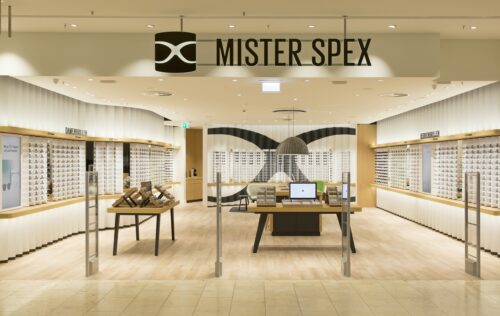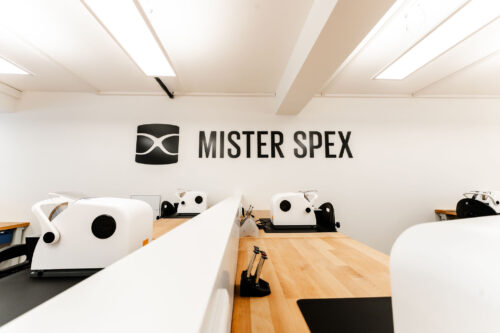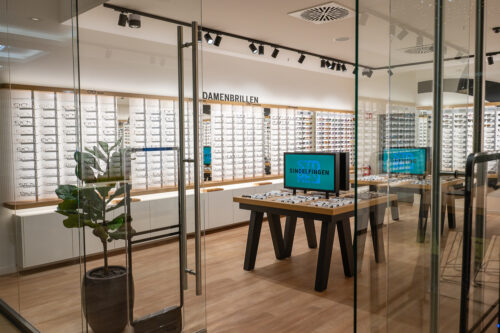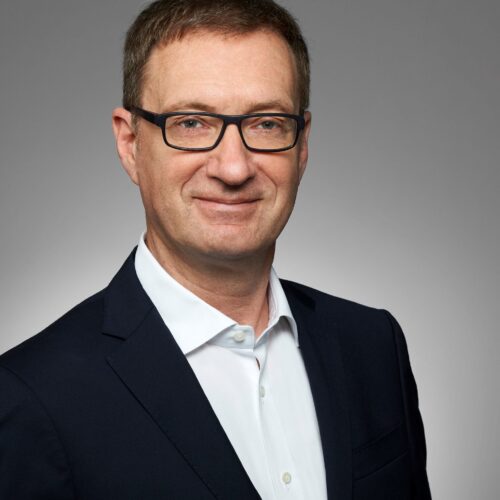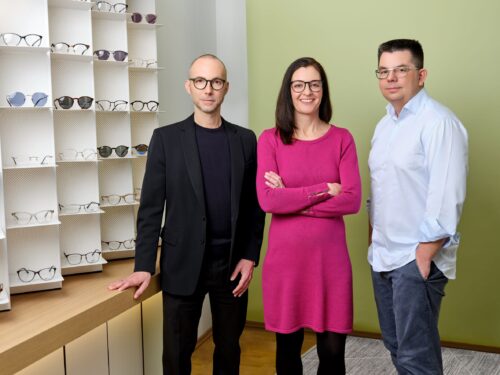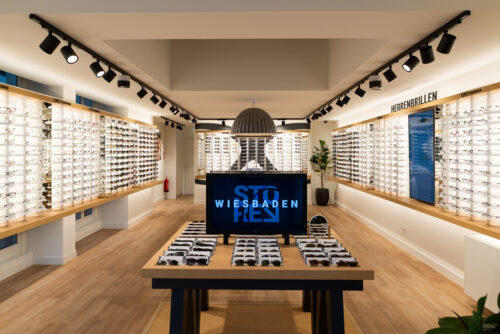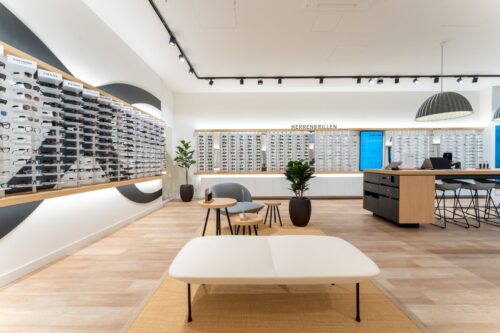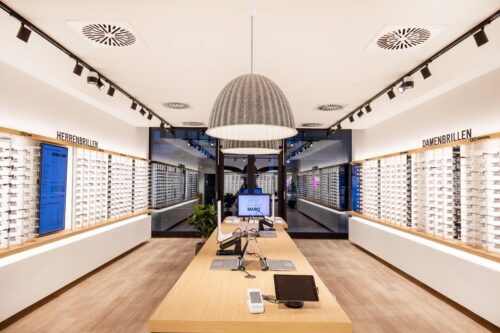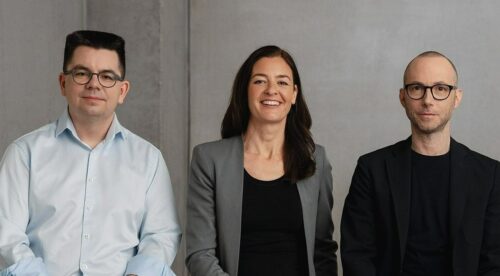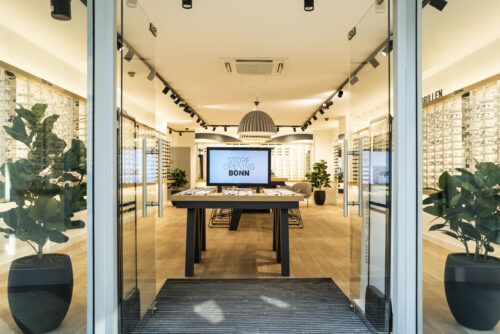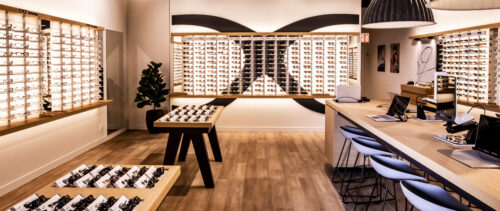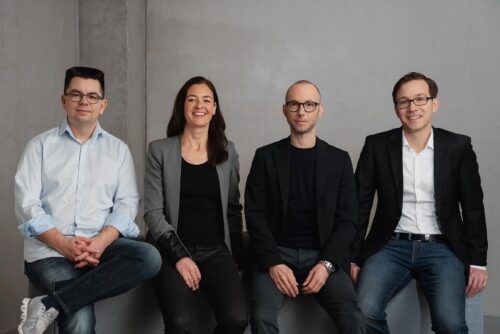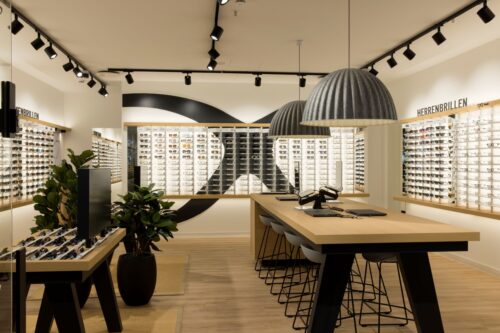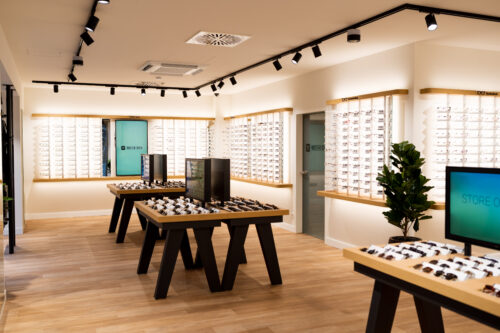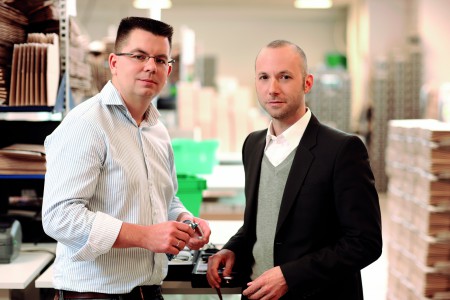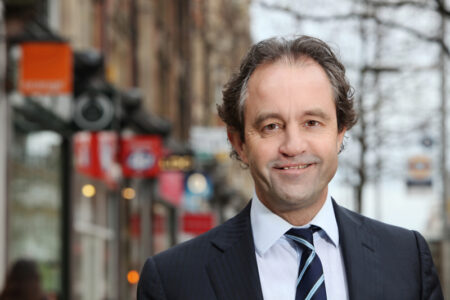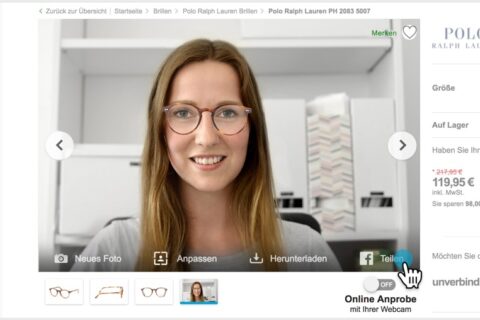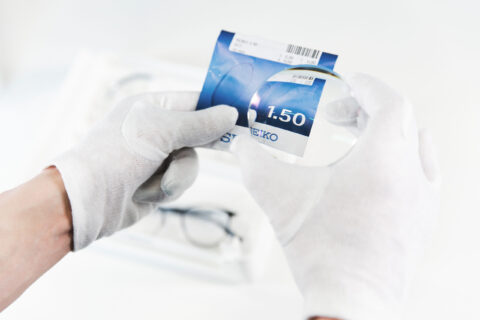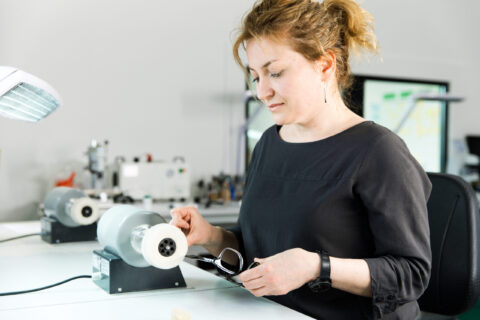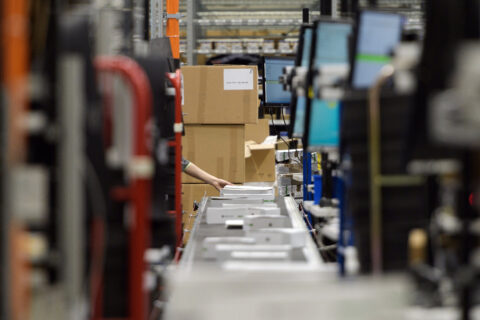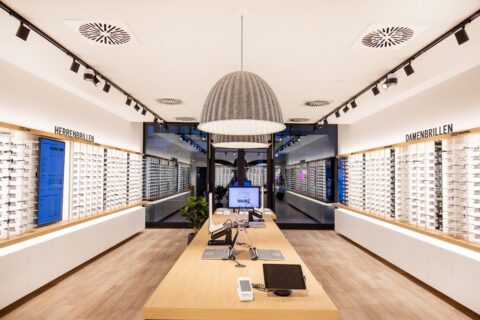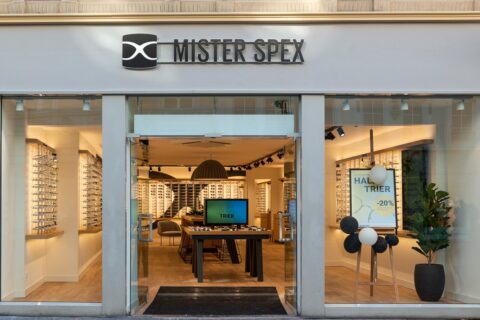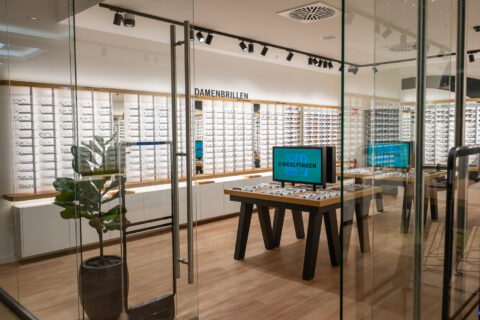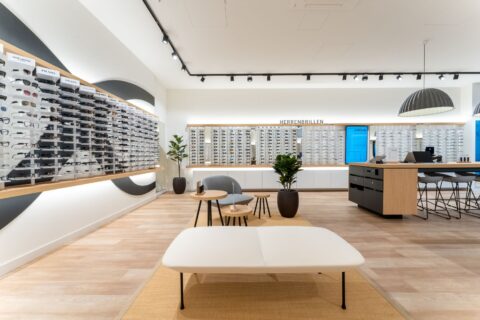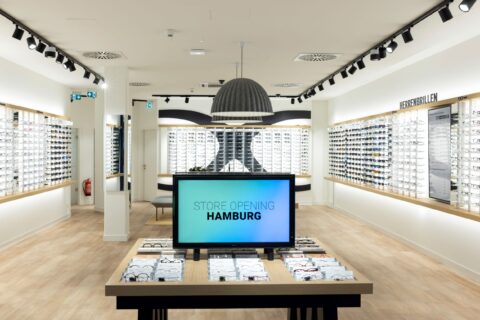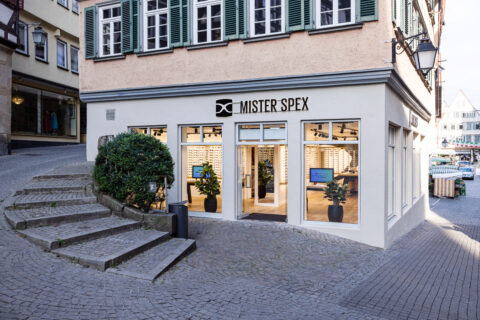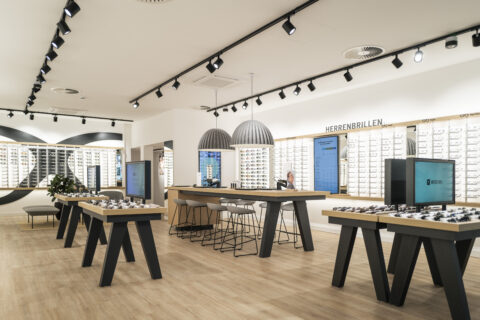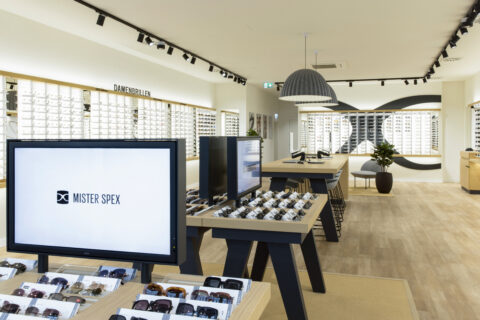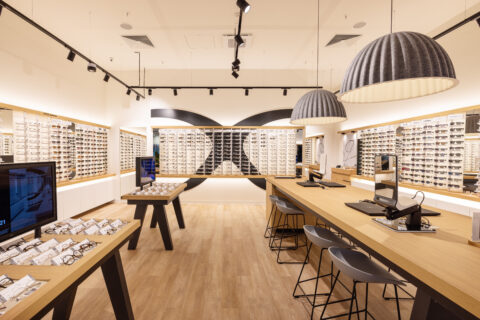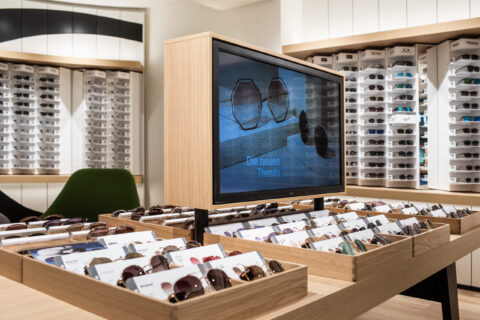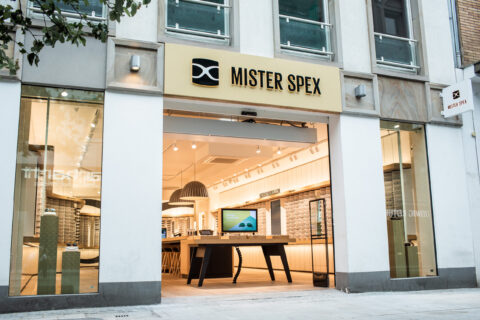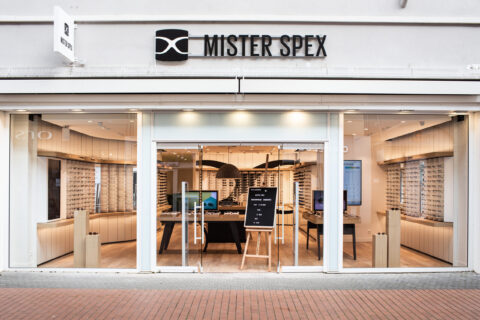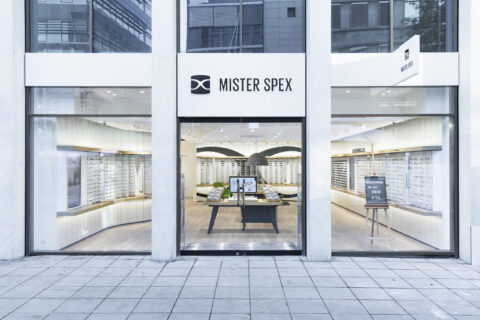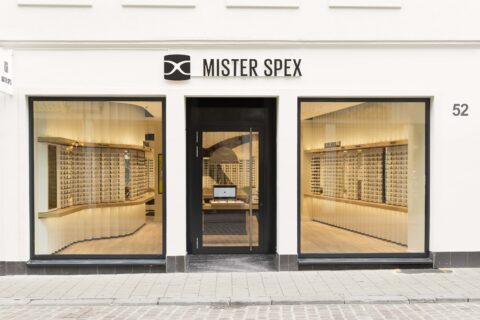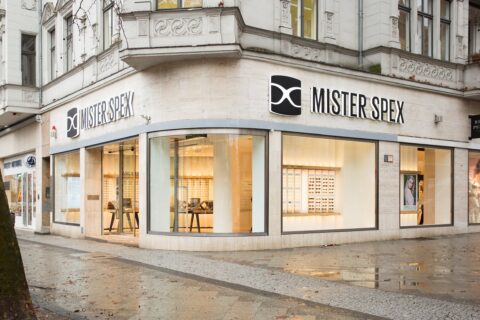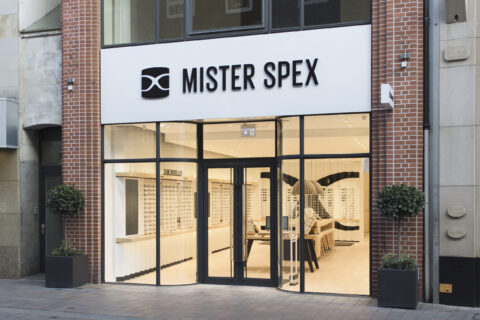27. March 2025
Mister Spex SE, one of Germany’s leading optical retailers, today announced its financial results for the full year 2024. The year was marked by the launch of the “SpexFocus” transformation and restructuring program in August 2024, aimed at sustainably increasing profitability and ensuring long-term cash generation. As part of this initiative, Mister Spex has streamlined its cost structure, optimized its product portfolio, and enhanced its margin performance, laying the foundation for a stronger and more efficient business model.
Net revenue declined by 3% to € 217 million, which is in line with the guidance range of € 210 million to € 230 million. The International business declined by 13%, primarily impacted by the strategic realignment under “SpexFocus” and the closure of stores in Austria, Sweden, and Switzerland. In its core market, Germany, Mister Spex achieved a 2% like-for-like sales growth, further underscoring its strength and continued relevance in its home market.
EBITDA declined due to reduced discounts, which temporarily impacted revenue. The adjusted EBITDA margin stood at -2.7%, within the adjusted guidance range of +1% to -4%. The cash balance remains solid at € 72 million, with a free cash outflow of -€ 37 million. This includes € 13 million in one-off costs, due to “SpexFocus” program, covering restructuring expenses such as store closures, severance payments, and expenses related to brand repositioning.
As part of the “SpexFocus” transformation and restructuring program, Mister Spex implemented a series of strategic measures to enhance profitability and operational efficiency, with a strong focus on margin improvement and long-term financial stability.
Discount detox and launch of premium private label lenses SpexPro
A key initiative was a targeted reduction in discounts, which initially had a negative impact on sales but ultimately aimed at improving gross margins and positioning the company for sustainable profitability in the medium term. In the second half of 2023, Mister Spex ran nine major discount promotions, a number that was deliberately reduced to just three in the second half of 2024. This disciplined shift towards more profitable sales resulted in a margin improvement of approximately 77 bps. in the prescription glasses category for the second half of the year.
At the same time, the launch of Mister Spex’s private label premium lenses, SpexPro, in September 2024 made a significant contribution to margin improvement. By Q4 2024, SpexPro accounted for roughly 20% of all prescription glasses orders. Additionally, overall average order value (AOV) increased from € 159 in Q4 2023 to € 205 in Q4 2024, while SpexPro orders achieved an AOV exceeding € 300. The gross margin of SpexPro was nearly double that of white-label products, making it one of the key margin drivers.
Rightsizing brand portfolio and inventory optimization
To increase profitability and ensure sustainable long-term cash generation, Mister Spex optimized its inventory and streamlined its product portfolio.
The company reduced the number of brands from approximately 150 to 100 and trimmed its product range from 20,000 to 12,000 SKUs (Stock Keeping Units), creating a more focused assortment that offers an attractive selection of brands and products. As a result, inventory decreased by approximately € 5 million, reaching € 28 million in December 2024, leading to optimized working capital.
Strong focus on German omnichannel business
Mister Spex maintained its focus on the core German market, achieving 2% like-for-like sales growth in its offline business in 2024. Total offline sales increased by 5%, reflecting the continued demand for Mister Spex’s optical services and expertise. In 2024, store-based sales for prescription glasses grew by 7%, while sunglasses sales increased by 5%, reflecting continued demand for Mister Spex’s offline offerings. Online sales for both categories remained positive for the first nine months but faced pressure in Q4 – prescription glasses due to the impact of a lens campaign in Q4 2023, and sunglasses following the discount detox strategy, which led to a more selective customer base, particularly impacting online business.
International Business and Segment Transitioned to a Pure Online Model
By the end of 2024, Mister Spex had fully exited its international store network, retaining only its online business outside the home market. The “SpexFocus” realignment led to a 13% revenue decline in the International segment for the full year. In Q4 2024, total revenue declined 25%, primarily due to the store closures in Austria, Sweden, and Switzerland. Store closures resulted in one-off costs of approximately € 5 million.
By focusing on its core market and strengthening its store network, Mister Spex continues to expand its position as one of Germany’s leading optical retailers. The combination of omnichannel excellence, optical expertise, an attractive selection of brands and products, as well as innovative services will be key to driving future growth.
Structural Optimization for Cost Efficiency and Workforce Reduction
As part of “SpexFocus”, Mister Spex SE has implemented significant cost reduction measures to enhance operational efficiency and profitability. The company has streamlined its headquarters structure, reduced personnel costs, and achieved substantial efficiency gains in production. Overall, the workforce has been reduced by nearly 20%. These measures create a leaner, more agile structure, ensuring long-term cost efficiency.
“In the 2024 financial year, we initiated the company’s transformation with the goal of establishing Mister Spex as a profitable optical retailer in the market. To achieve this, we will systematically improve our profitability, streamline our processes, and sharpen our focus on high-margin products. Despite a challenging market environment, we continue to successfully evolve our business model. Our offline business in Germany has proven to be a key growth driver. This demonstrates the effectiveness of our omnichannel approach and confirms that, with the right strategy, we are on the right path to achieving sustainable, profitable growth,” said Stephan Schulz-Gohritz, Chairman of the Management Board at Mister Spex.
Outlook for 2025
For 2025, Mister Spex expects the retail market to remain volatile. Furthermore, price repositioning and continuous reduction of discounts will lead to a negative impact on the revenue. Accordingly the company anticipates a revenue decline of -5% to -10%. Starting in the 2025 financial year, Mister Spex is adopting EBIT as its key performance metric to provide clearer visibility on operational performance, ensure transparency on sustainable profitability, and establish a foundation for long-term value creation EBIT margin is expected to land between -5% and -15%.
“SpexFocus” will continue in 2025, where the company will on drive cash flow and profitability through further efficiency improvements, optimize the retail business towards a more profitable store network, and strengthen optical expertise. Mister Spex expects the biggest improvement to come from increasing the average order value (AOV) which, combined with an optimized conversion rate, will lead to improved gross margins. These improvements will be driven by price adjustments, an optimized product mix strategy, and the expansion of the high-margin lens portfolio. Additionally, the company will expand its innovative services, including the systematic collection and analysis of customers’ vision needs and preferences to deliver more personalized recommendations. With these measures, Mister Spex is strategically positioning itself for dynamic growth in 2026.
The full-year 2024 annual report and further analyst and investor information are available on the Mister Spex Investor Relations website.
The Q1 2025 results will be published on May 8, 2025.
| Group Income Statement in € k |
|
Non-financial KPIs |
|
2024 |
2023 |
Change |
|
|
2024 |
2023 |
Change |
| Revenue |
216.752 |
223.530 |
-3 % |
|
Active Customers3 (in thousands)
|
1,573 |
1,747 |
-10 % |
| Revenue DE |
169,047 |
168,556 |
0 % |
|
Number of Orders4
(in thousands)
|
2,095 |
2,295 |
-9 % |
| Revenue INT |
47,705 |
54,974 |
-13 % |
|
Average Order Value5 (in €)
|
101,71 |
95,67 |
6 % |
| Gross profit1 |
108,016 |
113,157 |
-5 % |
|
|
| Gross profit margin1 |
49.8 % |
50.6 % |
-79 Bp |
|
|
| Adjusted EBITDA2 |
-5,801 |
900 |
>100 % |
|
|
|
|
|
|
|
|
|
|
|
|
| Group Income Statement in € k |
|
Non-financial KPIs |
|
Q4 2024 |
Q4 2023 |
Change |
|
|
Q4 2024 |
Q4 2023 |
Change |
| Revenue |
40,264 |
46,705 |
-14% |
|
Active Customers3 (in thousands)
|
1,573 |
1,747 |
-10% |
| Revenue DE |
32,461 |
36,312 |
-11% |
|
Number of Orders4
(in thousands)
|
388 |
455 |
-15% |
| Revenue INT |
7,803 |
10,393 |
-25% |
|
Average Order Value5 (in €)
|
101.71 |
95.67 |
6% |
| Gross profit1 |
20,340 |
26,345 |
-23% |
|
|
| Gross profit margin1 |
50.6% |
56.4% |
585 bp |
|
|
| Adjusted EBITDA2 |
-3,576 |
-2 |
>100% |
|
|
|
|
|
|
|
|
|
|
|
|
1) Management defines gross profit as revenue less cost of materials and gross profit margin as the ratio of gross profit to revenue.
2) Adjusted EBITDA, defined as earnings before interest, taxes, depreciation and amortisation, adjusted for share-based payment expenses according to IFRS 2, one-off transformation costs and other one-off effects that are not part of the regular course of business.
3) Customers who ordered in the last twelve months excluding cancellations.
4) Orders after cancellations and after returns.
5) Calculated as revenues divided by number of orders after cancellation and after returns, over the last twelve months.


